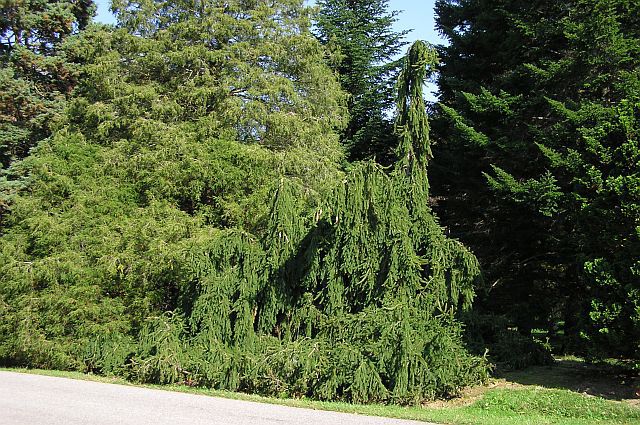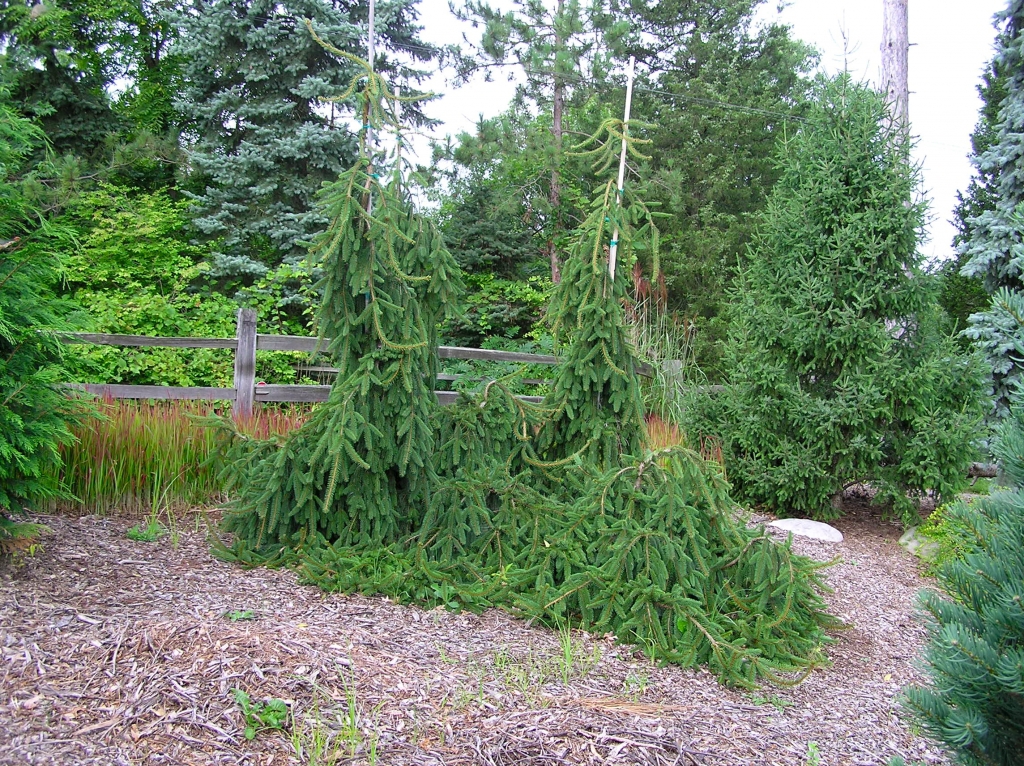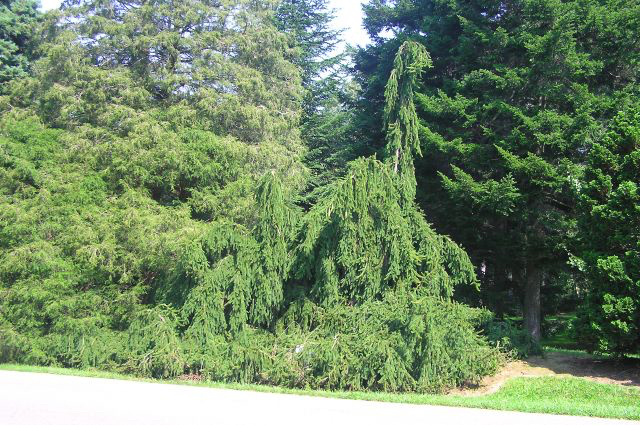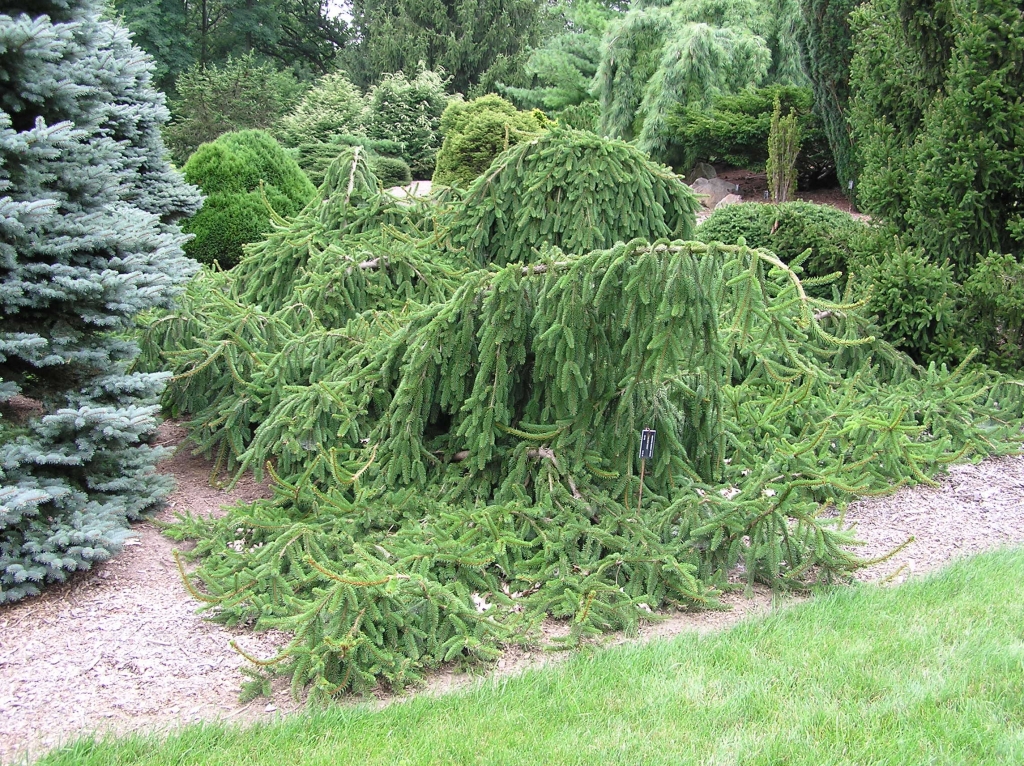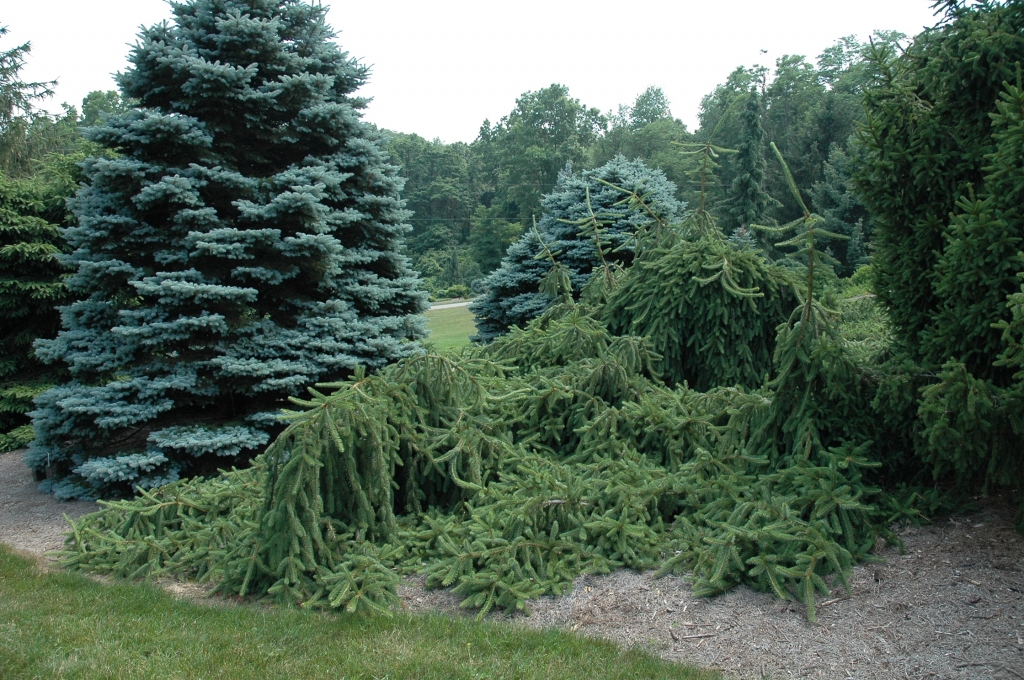
Picea abies 'Inversa' is a strong-growing, strict-weeping selection of Norway spruce with an extremely random and unpredictable growth habit. No two specimens will grow in the same manner. Unless staked when young, plants will ramble along the ground for many years as a ground cover. Often, at some point, a branch may develop apical dominance and grow skyward, but will always maintain strongly weeping lateral branching. Eventually the leader will "knuckle over," returning to the ground and resume it's meandering ways.
Over time, these trees will get quite large, requiring a sizeable footprint in the landscape. Each year, the terminal branches will extend from 24 to 36 inches (60 - 90 cm), either outward or upward.
This cultivar originated spontaneously, having been discovered around 1855 by R. Smith at Kinlet Hall, Shropshire, United Kingdom. Smith had originally listed it as 'Inverta,' but Ludwig Beissner corrected the Latin grammatical error in 1887. 'Inversa' is one of the great plants in the trade and should be planted anywhere there is room in the landscape.
